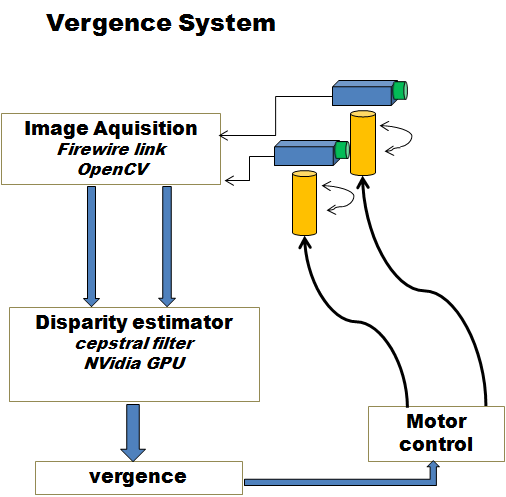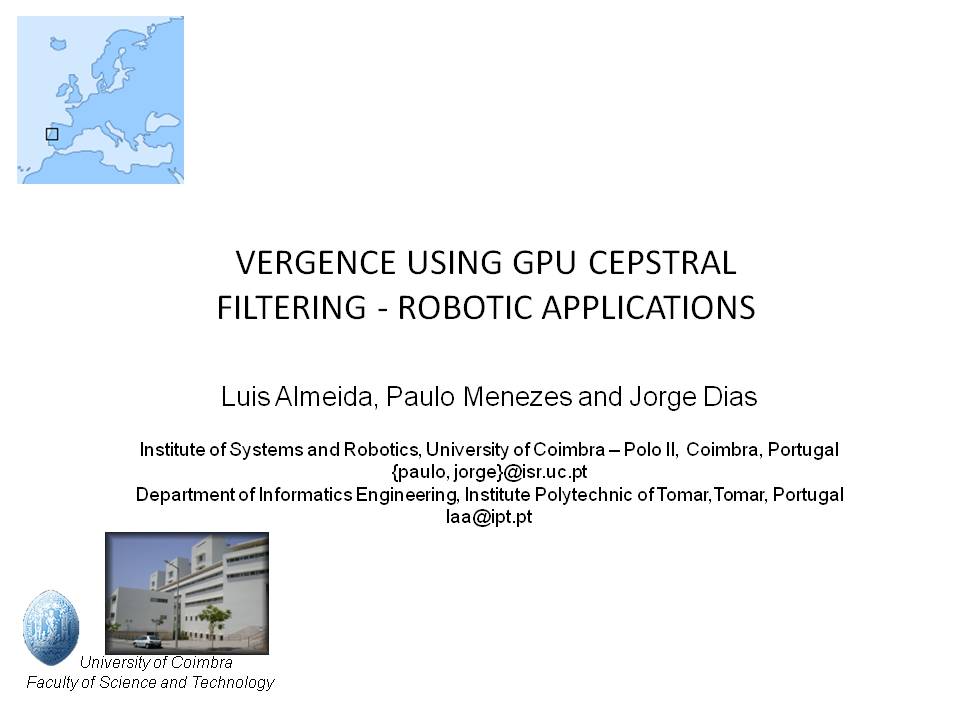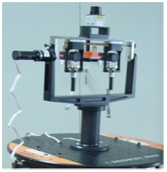Vergence using
GPU cepstral filtering
Vergence ability is an
important visual behavior observed on living creatures when they use
vision to interact with the environment. The notion of active observer
is equally useful for robotic vision systems on tasks like object
tracking, fixation and 3D environment structure recovery. Humanoid
robotics are a potential playground for such behaviors. This work
describes the implementation of a real time binocular vergence behavior
using cepstral filtering to estimate stereo disparities. By
implementing the cepstral filter on a graphics processing unit (GPU)
using Compute Unified Device Architecture (CUDA) we demonstrate that
robust parallel algorithms that used to require dedicated hardware are
now available on common computers. The cepstral filtering algorithm
speed up is more than sixteen times than on a current CPU. The overall
system is implemented in the binocular vision system IMPEP (IMPEP
Integrated Multimodal Perception Experimental Platform) to illustrate
the system performance experimentally.
Publications:
Luis Almeida, Paulo Menezes and Jorge Dias, "Stereo Vision Head Vergence Using GPU Cepstral Filtering", VISAPP 2011
- Proceedings of the Fifth International Conference on Computer Vision
Theory and Applications, Vilamoura, Algarve, Portugal, March 5-7, 2011.

Movie
1
L. Almeida, P. Menezes, J. Dias, "Vergence Using GPU
Cepstral Filtering", in Proceedings of the DoCEIS'11 - Doctoral
Conference on Computing, Electrical and Industrial Systems. Lisbon,
Portugal, February 21-23, 2011.
http://dx.doi.org/10.1007/978-3-642-19170-1_35

The Algorithm Overview









